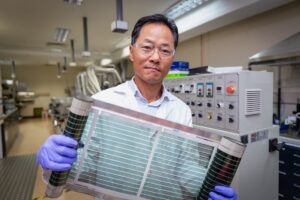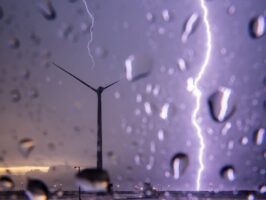In 2022 the Australian renewable energy industry broke through another milestone, commencing construction on over 5,000 megawatts of wind and solar farms. This is on top of another strong year for small scale rooftop solar of slightly under 3,000 megawatts.
Green Energy Markets’ core business, since we were established in 2008, has been tracking Australia’s renewable energy project pipeline, and supply and demand across both large-scale renewables and small scale rooftop solar.
For the past few years we had been expecting a slow down in investment to occur due to:
- The fact that projected supply of renewable energy certificates known as LGCs far exceeds the mandated Renewable Energy Target;
- An expectation that the boom in solar and wind capacity additions since 2016 would act to depress wholesale power prices to low levels during sunny and windy conditions; and
- Constraints in existing available transmission capacity and deteriorating transmission loss factors.
In the end the investment slow-down hasn’t eventuated, in large part thanks to state governments stepping in to underwrite new investment through provision of contracts that underwrite a large portion of projects’ revenue.
The other big factor has been the emergence of demand and long-term offtake contracts from large corporations with significant commitments to purchase and retire renewable energy certificates or LGCs.
Finally, there has also been improving levels of clarity around the exit of coal generators. Then as an additional injection of confidence for investors was all hell breaking loose international gas and coal markets as a result of the Russian withdrawal of gas supply to Europe.
The surge in gas and coal prices, and poor reliability of Australian coal power generators, has led to astronomically high wholesale electricity prices over 2022, after very low prices for much 2020 and 2021.
Looking back over the past 10 years of renewable energy construction commitments in the chart below, we can see just how significant last year’s 5 gigawatts represents.

It’s worth adding, by the way, that the large investment that has unfolded over the last few years has precisely nothing to do with the prior Liberal federal government’s policies, except perhaps for the ceasefire in attacks on the industry under Malcolm Turnbull’s Prime Ministership.
So what about the future?
In our quarterly Renewables Report we have been evaluating how the mainland NEM states are tracking towards their respective 2030 renewable energy targets.
We haven’t done such an analysis for the new Albanese Federal Government’s 82% renewables goal because, until very recently, they hadn’t announced a policy mechanism to deliver it.
The table below details the generation gap each state needs to fill in order to meet their target. This is relative to the amount of renewables generation we can see will be in place by 2030 from operating, committed and contracted large-scale projects, as well as rooftop solar growth we project.

If we were to make the simplifying assumption that 70% of this generation gap was to be met by wind and 30% from solar it suggests an opportunity for roughly around 9.5GW of new wind projects to 2030 and 6GW of new solar projects to 2030.
But let’s call it 15GW to make things simple. That’s just another three years’ worth of construction commitments in line with what we managed last year.
We don’t wish to suggest that achieving such a gap is easy. One only needs to look at the types of difficulties, delays and constraints experienced by projects that went through construction over the past 3 years to appreciate the challenges ahead.
We desperately need more energy storage and more transmission capacity and a lot more electrical network engineers.
But if we give the energy transition the priority it deserves, it shouldn’t be beyond us as a nation.
Tristan Edis is Director of Analysis and Advisory at Green Energy Markets. Green Energy Markets provides analysis and advice to assist clients make better informed investment, trading and policy decisions in energy and carbon abatement markets.










